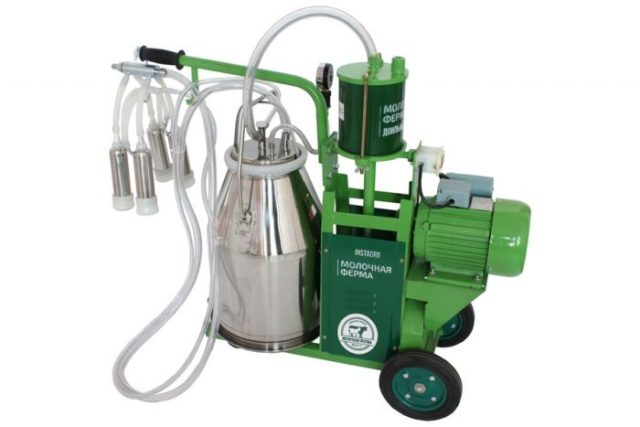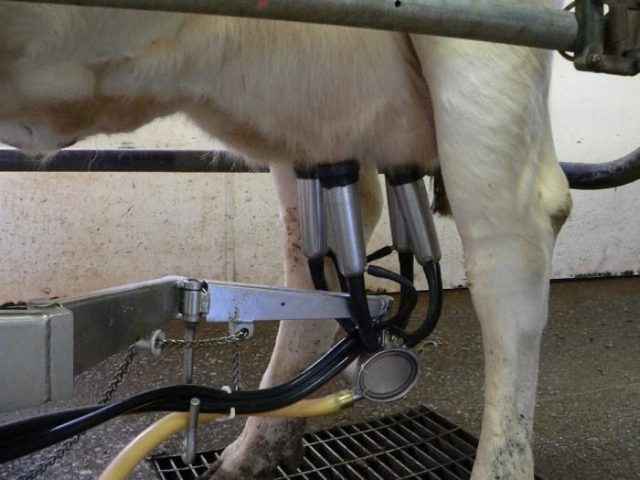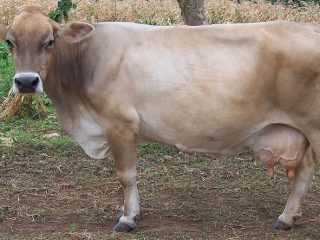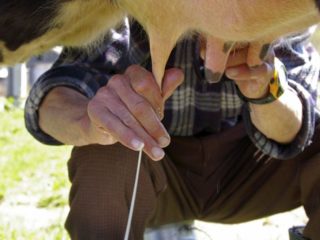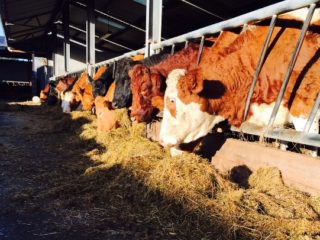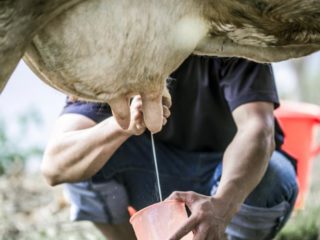Content
Milking machine Dairy Farm is presented on the domestic market in two models. The units have the same characteristics, device. The difference is a slight design change.
Advantages and disadvantages of milking machines Dairy Farm
The advantages of milking equipment reflect its distinctive features:
- the piston-type pump is distinguished by its efficient operation;
- stainless steel milk collection canister is resistant to oxidation, corrosion;
- metal discs on the rear and front wheels allow the unit to be transported on a bad track with bumps;
- the special anatomical shape of the elastic silicone inserts ensures gentle contact with the cow's udder;
- the aluminum body of the motor has an increased heat transfer, due to which the wear resistance of the working units increases;
- the set with the device comes with cleaning brushes;
- The original plywood packaging protects the equipment from damage during transportation.
The disadvantage of the Dairy Farm is that users consider the increased noise level. The stainless steel can increases the overall weight of the milking system.
The lineup
On the domestic market, the model range of the Dairy Farm is represented by 1P and 2P devices. The technical characteristics of the units are the same. There is a slight design difference. In the video testing the Dairy Farm:
Milking machine Dairy farm model 1P
The main modules of the Milk Farm milking installation are: a pump, a milk collecting can, a motor. All units are installed on the frame. The milking process itself is carried out by attachments. On model 1P, the transport handle is equipped with a bracket. The device is used for hanging attachments during storage and transportation of the device.
A pulsator is responsible for the process of expressing milk in many milking machines. The 1P Dairy Farm model has a simplified design. The device does not have a pulsator. Its work is replaced by a piston pump. The frequency of movements for 1 minute of the pistons is 64 strokes. Compression of the udder teat is close to hand milking or sucking by a calf. The gentle work of the device creates comfort for the cow. Replacing the pulsator with a piston pump allowed the manufacturer to significantly reduce the cost of the milking unit.
The 1P device is equipped with a motor powered by a 220 volt electrical network. The aluminum body has excellent heat dissipation, which eliminates the possibility of overheating and rapid wear of working parts. The motor is attached to the milking cluster frame over the wheels. The openness of the case allows for additional air cooling. The 550 W motor power is sufficient for trouble-free milking.
The model 1P piston pump drives the connecting rod. The element is connected to the motor by a belt drive. A vacuum hose for air intake is connected to the pump. Its second end is connected to the fitting on the can lid. For the milking process, the machine is equipped with a vacuum valve. The unit is installed on the can lid. The pressure level is regulated by a vacuum gauge.
Model 1P has a set of glasses for one cow. More than one animal must not be connected to the equipment for simultaneous milking. Glasses are connected to the system with transparent food-grade polymer hoses. There are elastic inserts inside the cases. The cups are adhered to the udder by silicone suction cups. The transparency of the transport hoses allows you to visually control the movement of milk through the system.
Model 1P weighs 45 kg. The can holds 22.6 liters of milk. The container is securely installed on the milking cluster support platform. The can is securely fixed, which excludes the possibility of overturning.
The device 1P is started from idle. In this state, it works for at least 5 minutes. During this period of time, a complete inspection is performed. They make sure that there is no extraneous noise, oil leakage from the gearbox, air persecution at the connections, check the reliability of fixation of all clamps. The identified problems are eliminated, and only after that they start using the milking equipment for their intended purpose.
Milking machine Dairy farm model 2P
A slightly improved analogue of the 1P model is the 2P milking machine. Among the technical characteristics, the following indicators can be distinguished:
- the total productivity of the 2P model is from 8 to 10 cows in 1 hour;
- operation of the electric motor from a 220 volt electrical network;
- motor power 550 W;
- milk container capacity 22.6 liters;
- the weight of the fully loaded equipment is 47 kg.
From the technical characteristics, we can conclude that the 1P and 2P models are almost identical. Both devices are reliable, maneuverable, equipped with a piston pump. A distinctive feature of the 2P device is the double handle, which is more convenient for transportation. The 1P model has one control knob.
The double handle of the device similarly has a bracket for hanging attachments. Free access to all working nodes is open. They are easy to service and replace if necessary.
The manufacturer completes the 2P device with the following elements:
- silicone vacuum tubes - 4 pieces;
- three brushes for cleaning equipment;
- silicone milk pipes - 4 pieces;
- spare V-belt.
The equipment is delivered in reliable plywood packaging.
Specifications
Models 1P and 2P are characterized by the presence of similar parameters:
- total productivity - from 8 to 10 heads per hour;
- the engine is powered from a 220 volt network;
- motor power 550 W;
- system pressure - from 40 to 50 kPa;
- pulsation occurs at a frequency of 64 cycles per minute;
- the capacity of the milk container is 22.6 liters;
- weight without packaging model 1P - 45 kg, model 2P - 47 kg.
The manufacturer provides a 1 year warranty. The contents of each model may vary.
Instructions
Milking machines 1P and 2P are used according to the operating instructions. Each start is carried out with an idle start button. After checking the performance of the system, glasses are put on the nipples, and they are fixed to the udder with suction cups. The device is given an additional idle time of 5 minutes until the operating pressure rises in the system. Determine the indicator on the vacuum gauge. When the pressure reaches the norm, the vacuum reducer is opened on the lid of the milk container. Through the transparent walls of the hose it is assured at the beginning of milking.
The milking equipment works according to the following principle:
- The upward-moving pump piston opens the valve. The pressurized air is directed through the hoses to the beaker chamber. The rubber insert is compressed, and with it the teat of the cow's udder.
- The return stroke of the piston provokes the closing of the pump valve and the simultaneous opening of the valve on the can. The created vacuum releases air from the beaker chamber. The rubber insert unclenches, releases the nipple, milk is expressed, which is directed through the hoses into the can.
Milking is stopped when milk stops flowing through the transparent hoses.After turning off the motor, the air pressure is released by opening the vacuum valve, and only then the glasses are disconnected.
Conclusion
Milking machine Dairy Farm takes up little space, compact, mobile. The equipment is suitable for use in private households and on a small farm.
